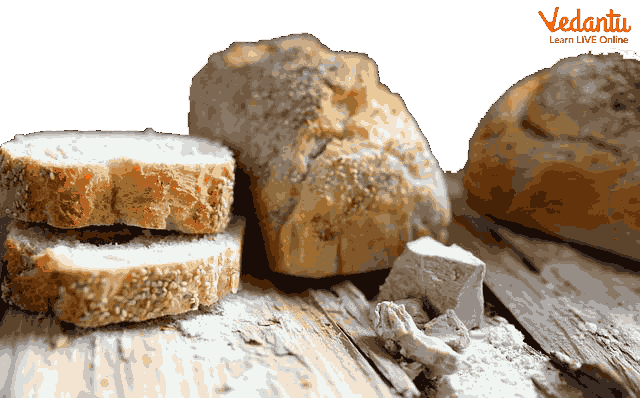




Yeast - Introduction
Yeast is mainly used in the manufacturing of baked goods and alcoholic beverages. Humans have been manufacturing fermented beverages like beer and wine for thousands of years, and there is evidence that ancient Egyptians used yeast to produce bread. Yeasts are typically found in dairy products with low pH, although some yeast species have also been discovered in raw and commercial milk with neutral pH.
Yeast bread facts say that the carbon dioxide yeast releases after consuming the carbohydrates in the bread dough cause the dough to rise.
Our digestive system remains balanced and healthy because of yeast. The proper dosage in our body aids in operating our immune system. In the human stomach, yeast is a beneficial type of bacteria. It can aid in illness prevention and even help us absorb vitamins and minerals from our diet.
The dried kind of Baker's yeast, known as dry yeast, has a lengthy shelf life and doesn't require refrigeration. It adds a pleasant flavour and improves texture in various baking formulas.

A Baker’s Yeast
What does Yeast Do?
How does yeast work, and are its functions the same? It works by acting as one of the flavouring agents in the fermentation process, which is crucial for making bread. Any flavour’s primary function is to create the gas that causes bread to rise. Yeast does this by consuming the sugars in the flour and producing carbon dioxide as it does so. When yeast and oxygen interact, they help sweeten or raise bread. There is proof that yeast was used to make bread by the ancient Egyptians 4,000 years ago.
Carbon dioxide is created by the yeast when it consumes the sugar. This gas steadily fills the balloon because it has nowhere else to go but up. As the bread rises, a very similar process takes place. Yeast creates hundreds of balloon-like bubbles in the dough filled with carbon dioxide. This gives the bread its airy texture after the bread has been baked.
This gives the bread its airy texture after the bread has been baked. When yeast and oxygen interact, they help sweeten or raise bread. There is proof that yeast was used to make bread by the ancient Egyptians 4,000 years ago.
Yeast Experiment For Preschool
To Start, combine a packet of active yeast with 1/4 cup of warm water and a teaspoon of sugar in a bowl. You will see the fluid foaming after 10 minutes, which indicates that the microorganisms are consuming and producing carbon dioxide. See how CO2 bubbles cause the dough to rise.
Experiment- Yeast and other organisms require sweet foods to grow. Once the bread has been baked, try to identify the link between the foaming yeast and the air bubbles in a slice. After 2 minutes, Butter up your bread and enjoy eating it!
Interesting Facts About Yeast
Considering that it ferments sugars and starches into alcohol and carbon dioxide, it gets its name from the Latin Greek word that means "sugar fungus."
Currently, 1,500 known yeast species go back hundreds of millions of years.
They are believed to make up approximately 1% of all known fungal species.
Yeast typically ranges in size from 3 to 4 microns. The largest can reach up to 40 mm in size.
Aquarium hobbyists frequently use yeast to produce carbon dioxide (CO2) to feed plants.
Electricity can be produced with yeast. Another model organism for researching cell biology is yeast.
Some yeasts can infect people and cause diseases.
Conclusion
In conclusion, Yeast is a tiny creature with just one cell. Animal cells, including human cells, grow much more slowly than yeast cells. The yeast cells conducted fermentation, resulting in the production of both carbon dioxide and ethanol. Our digestive system remains balanced and healthy owing to yeast.
The proper dosage in your body aids in the operation of your immune system. It has been a vital component of baking, winemaking, and brewing for thousands of years. One of the oldest domesticated creatures is certainly yeast microorganisms.
FAQs on Facts About Yeast
1. Can you grow yeast on your own?
It is easy to get hold of natural yeast. Learning how to generate your own baker's yeast. We need flour and water. Simply combine the two, and the yeast will appear.
2. Does Yeast contain DNA?
Although it may seem as though humans and yeast don't have much in common, yeast is a genetically modified organism. Thus, DNA is stored in chromosomes in the nucleus of yeast cells, much like in human cells. Our cells and yeast cells are similar in many fundamental biological ways.
3. What occurs if too much yeast is added to bread?
By releasing gas before the flour is ready to expand, too much yeast could cause the dough to become flat. If the dough is allowed to rise for an excessively long time, it will begin to smell and taste like yeast or beer, flatten or rise improperly in the oven, and develop a thin crust.









